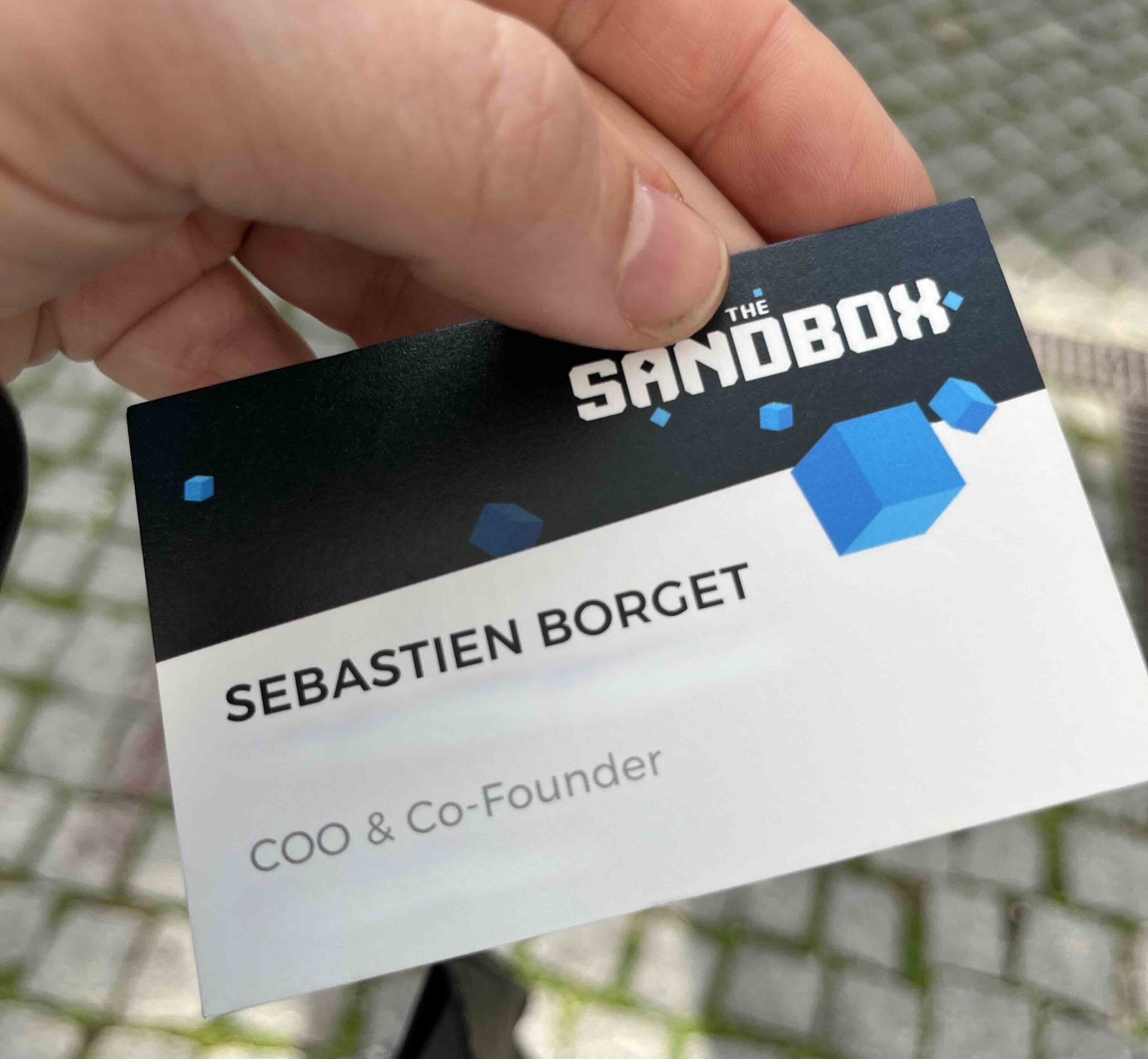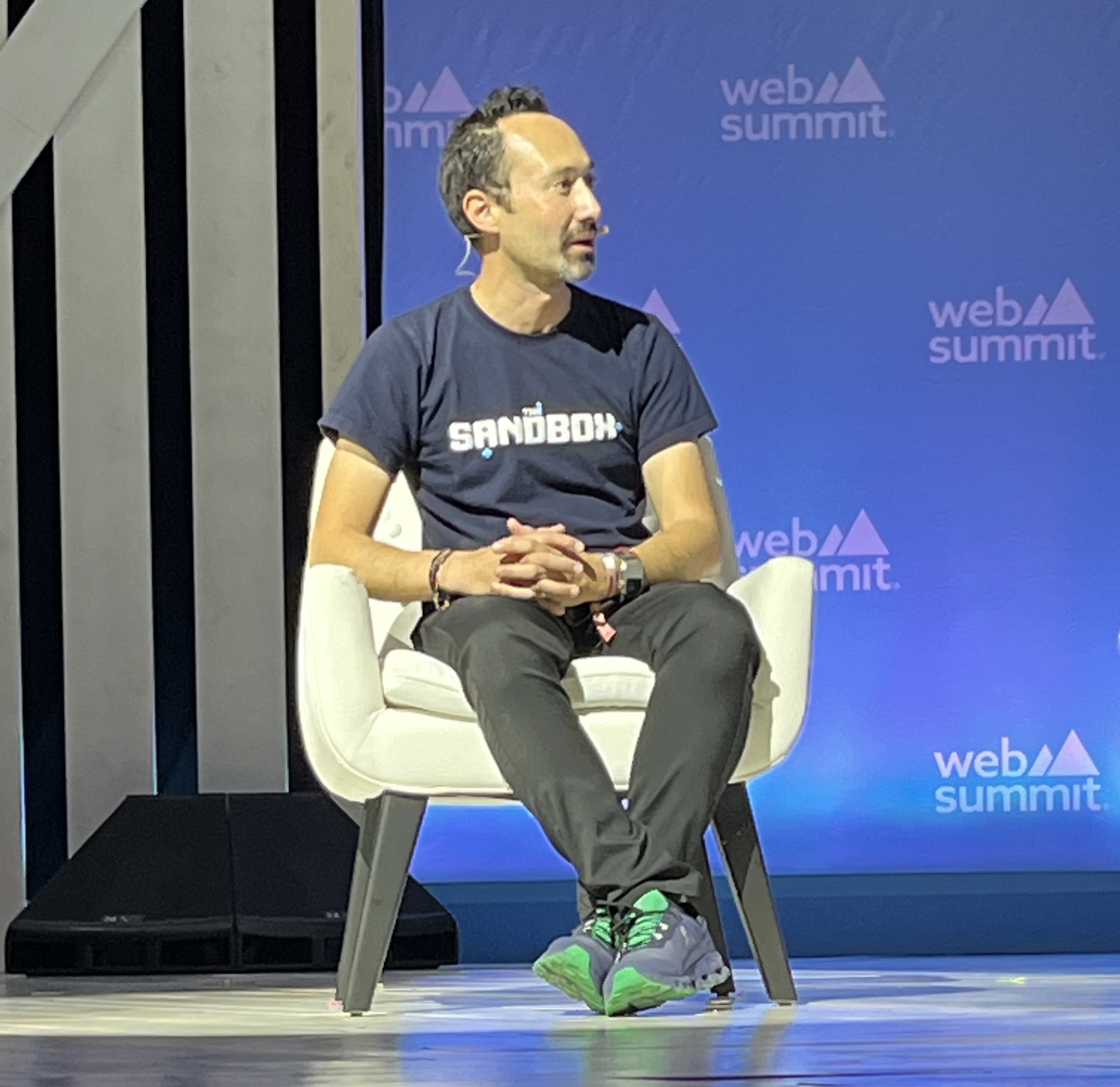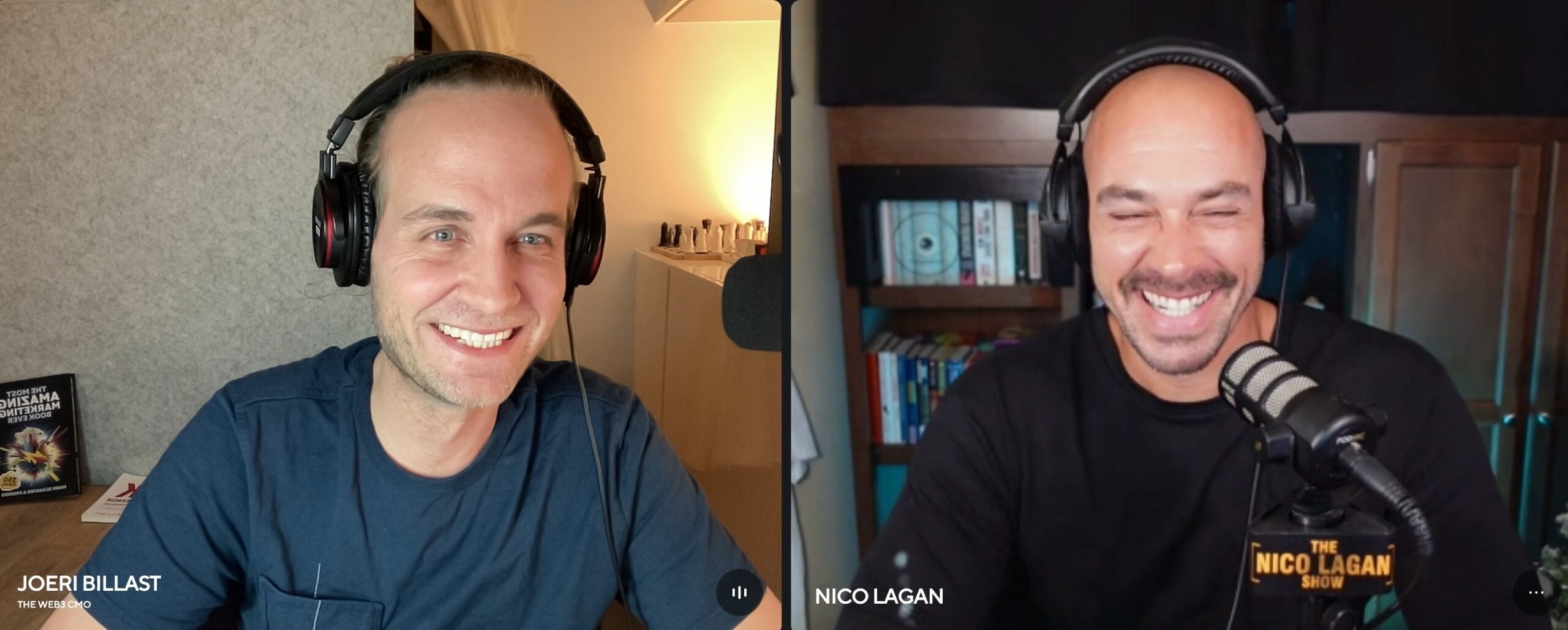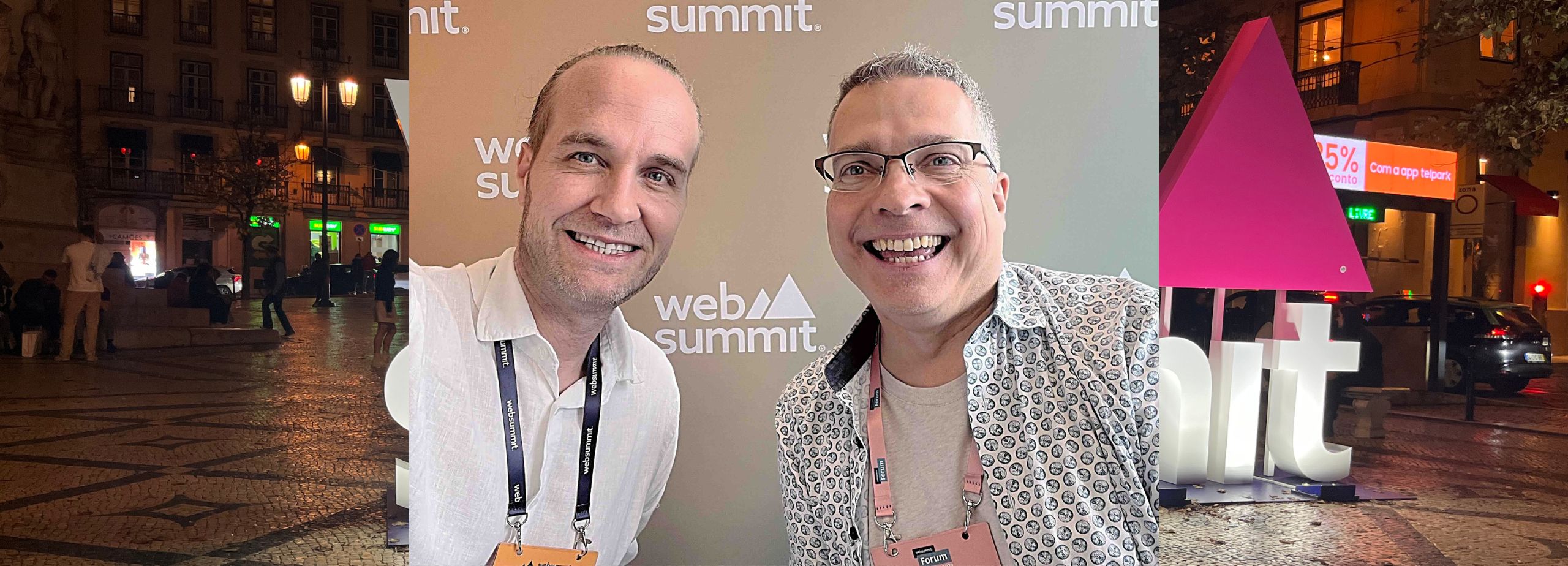Embark on a transformative gaming odyssey with Sébastien Borget, the trailblazing COO of The Sandbox and president of the Blockchain Game Alliance.
Uncover the seismic shift from traditional gaming platforms to the revolutionary blockchain technology that's redefining how we play, create, and monetize content. As Sébastien reminisces about his leap from mobile gaming to the vanguard of blockchain, we navigate the pivotal moments that birthed The Sandbox and the empowering solutions blockchain offered to creators struggling with monetization. This episode promises to illuminate the metamorphosis of gaming into a dynamic world where digital assets aren't just pixels on a screen but gateways to continuous engagement, social interaction, and tangible rewards.
Step into the marketing wonderland of Sandbox+, where a finite map of NFT lands beckons brands, celebrities, and cultural experiences to weave their stories. Experience how the innovative Owner Relationship Model in The Sandbox is rewriting the script for user interaction and loyalty, offering a mix of digital and real-life treasures. Sebastien's insights on constructing virtual neighborhoods that foster community and creativity are just the tip of the iceberg. We'll also explore the blending of AI with blockchain in gaming, revealing the staggering potential for immersive podcasting within the metaverse and unpacking the future of digital identity verification. This episode isn't just a peek into the future; it's a masterclass in the intersection of technology, creativity, and identity in the virtual worlds we're all a part of.

Unleashing Creativity: The Intersection of Web3, Gaming and Blockchain
Ever wondered how the gaming industry is evolving with the advent of new technologies like blockchain? Or perhaps you're curious about how these advancements are empowering creators and transforming user experiences?
This article takes you on a journey through the world of Web3 and gaming, exploring its evolution from simple 2D games to complex virtual worlds. It delves into how blockchain technology has been integrated into this space, enabling users to create, exchange, and monetize their digital assets. You'll also discover unique features that set platforms like Sandbox apart from others in terms of aesthetics, partnerships, navigation systems and diverse content offerings.
The impact of these developments is significant as they not only revolutionize game creation but also redefine player engagement by providing opportunities for true ownership and monetization. Furthermore, it opens up innovative ways for brands to connect with their audience while fostering community collaboration.
All your questions about this fascinating intersection between gaming and blockchain will be answered in detail throughout this comprehensive guide.
The Journey into Web3 and Gaming
Sebastian's journey into Web3 and gaming began with his early interest in video games. Like many kids and teenagers, he fell in love with playing video games and dreamed of one day creating his own. However, he soon realized that creating video games on consoles was a complex and inaccessible process. The high cost, special hardware requirements, and the need for permission made it difficult for aspiring entrepreneurs to enter the industry.
Then came the advent of smartphones, which revolutionized game creation. With smartphones, small teams of one or two people could create games from their homes or garages. This newfound accessibility inspired Sebastian and his team to develop a mobile game that would allow anyone, even those without programming or technical skills, to create their own video games.
The first Sandbox was born out of this idea. It was a 2D game that utilized smartphone technology, such as touch screens and accelerometers, to enable users to create their own worlds, art scenes, music components, and more. The game quickly gained popularity, with millions of downloads and millions of user-created creations shared in the gallery.
However, despite its success, Sebastian and his team noticed that some creators were not fully satisfied. They wanted more than just social recognition for their creations; they wanted a form of monetization and association with their work. Unfortunately, the existing platform did not allow for direct payments to users based on their profiles.
This growing pain point led Sebastian to explore blockchain technology. In 2017, he delved into the world of cryptocurrencies and discovered the first blockchain games. One game in particular caught his attention: CryptoKitties. In this game, players could breed virtual cats on the blockchain, with each cat being a unique digital asset that could be owned and exchanged between users.
This revelation sparked an idea in Sebastian's mind. Instead of virtual cats, what if they applied this concept to the content created on the Sandbox platform? Users could exchange and sell their creations as digital assets, opening up new possibilities for recognition and monetization. With this vision in mind, Sebastian and his team decided to rebuild the Sandbox from the ground up, leveraging blockchain technology to empower creators.
The Evolution of Sandbox
The success of the original Sandbox game was undeniable, with millions of downloads and a thriving community of creators. However, Sebastian and his team also encountered some challenges along the way. Despite their efforts to release regular updates and feature top creators, they noticed that some creators were losing interest or stopping altogether. They realized that social fame alone was not enough for these creators; they wanted a form of recognition and monetization for their work.
This growing pain point led Sebastian to explore alternative solutions, and that's when he discovered blockchain technology. In 2017, he began diving into the world of cryptocurrencies and blockchain games. One game in particular caught his attention: CryptoKitties. This game allowed users to breed and own virtual cats on the blockchain, with each cat being a unique digital asset that could be bought, sold, and exchanged between players.
Sebastian saw the potential of applying this concept to the content created on the Sandbox platform. Instead of just virtual cats, users could exchange and sell their own creations as digital assets. This would provide them with a new level of recognition and monetization for their work. It was a revelation that sparked a new direction for Sandbox.
With this vision in mind, Sebastian and his team made the decision to rebuild the Sandbox from the ground up, incorporating blockchain technology into its core. They saw an opportunity to create a platform that would empower creators by allowing them to truly own and monetize their creations. This meant building a new version of Sandbox that would leverage blockchain technology in innovative ways.
The transformation of Sandbox into a platform that empowers creators was not just about adding blockchain functionality. Sebastian and his team took this opportunity to enhance the Sandbox experience even further. They added multiplayer capabilities, 3D elements, and a wide range of content creation tools. The goal was to create a platform that would not only allow users to create games, but also enable them to build virtual worlds, museums, art galleries, virtual concerts, and much more.
The Unique Features of Sandbox
While there are other gaming platforms and virtual worlds like Minecraft, Roblox, and Decentraland, the Sandbox stands out with its unique features and offerings. One of the key aspects that sets the Sandbox apart is its aesthetic and accessibility. The Sandbox utilizes voxel art, which is a simple yet versatile 3D cube design that resembles digital Legos. This art style makes it easy for users to create both simple and complex compositions, allowing for endless possibilities in terms of creativity.
Another standout feature of the Sandbox is its partnerships with over 400 brands from around the world. These partnerships span various industries such as fashion, sports, music, entertainment, and more. The Sandbox has collaborated with celebrities like Snoop Dogg, Steve Aoki, and Paris Hilton, as well as music labels like Warner Music and fashion brands like Gucci and Lacoste. Additionally, gaming giants like Ubisoft and Atari have also been involved in the Sandbox. These partnerships bring a wide range of content and assets to the platform, allowing users to mix and match them to create unique experiences.
In addition to its aesthetic and brand partnerships, the Sandbox also offers a unique map-based system for navigation within its virtual world. The map serves as a guide for users to explore different locations within the Sandbox. Each location represents a piece of land that can be owned as an NFT (non-fungible token), which is a digital asset that can be bought, sold, and exchanged. The location of a user's land within the map holds significance as it determines their virtual presence within the Sandbox community. This concept of virtual neighbors adds a sense of community and allows users to connect with others who share similar interests or themes.
Lastly, the Sandbox stands out for its diverse range of content and experiences. While it is often referred to as a gaming platform, it offers much more than just games. Users can explore virtual museums, art galleries, attend virtual concerts, and even visit virtual landmarks. The Sandbox aims to bridge culture and diversity by showcasing content from all around the world. This exposure to different cultures and themes enriches the overall experience for users and fosters a sense of inclusivity within the community.
The Role of Brands and Businesses in Sandbox
Brands play a crucial role in the Sandbox ecosystem, and their presence is highly valued by the community. One of the key aspects that brands focus on in the Sandbox is storytelling. Storytelling is essential for building brand value and loyalty among users. By creating their own stories and adventures within the Sandbox, brands can expand the universe of their favorite characters and engage with their fans in a unique way. Whether it's inventing new worlds or developing new experiences, brands have the opportunity to connect with their audience on a deeper level and reinforce their relationship with them.
Many well-known brands have already embraced the Sandbox platform to create immersive experiences for their customers. The Sandbox has partnered with over 400 brands from various industries, including fashion, sports, music, entertainment, and gaming. These partnerships allow brands to showcase their content and assets within the virtual world, giving users the opportunity to interact with their favorite brands in a whole new way.
One of the main advantages of engaging with brands in the Sandbox is the strong user engagement it generates. Users are highly motivated to complete quests and experiences created by brands within the Sandbox. These quests can involve treasure hunting, fighting, parkour, puzzle-solving, and more. By completing these quests, users earn rewards, which can include digital assets in the form of NFTs. The high completion rate of these quests (92% on average) demonstrates the strong engagement and interest that users have in brand-related experiences within the Sandbox.
Brands also have the opportunity to offer unique rewards to users who engage with their content in the Sandbox. These rewards can range from exclusive digital assets to physical items or experiences. For example, a brand may offer a limited edition wearable item or a free ticket to an offline event as a reward for completing a quest or experience. These rewards not only provide users with a sense of achievement but also create a tangible connection between the brand and its audience.
The Integration of NFTs and User-Generated Content in Sandbox
Within the Sandbox platform, there is a seamless integration of NFTs (Non-Fungible Tokens) and user-generated content. Brands have the freedom to choose whether they want to utilize NFTs or focus on user-generated content to enhance their presence in the virtual world. This flexibility allows brands to align their strategies with their specific goals and target audience.
Some brands fully embrace the concept of NFTs and recognize the potential they hold in terms of digital ownership and scarcity. By utilizing NFTs, brands can create unique digital assets such as avatars, virtual items, or even entire virtual worlds. These NFTs can be bought, sold, and traded on blockchain marketplaces, providing users with a sense of true ownership over their digital assets.
On the other hand, some brands may choose to focus more on user-generated content within the Sandbox. User-generated content refers to content created by the community of users within the platform. This can include artwork, games, experiences, and more. By encouraging users to create their own content, brands can tap into the creativity and passion of their audience, fostering a sense of community and collaboration.
Regardless of whether brands choose to utilize NFTs or focus on user-generated content, the underlying technology in Sandbox ensures that true ownership of digital assets is maintained. This means that users have control over their creations and can monetize their content if they choose to do so. For example, a user who creates a popular game within the Sandbox can earn revenue through in-game purchases or by selling their game assets as NFTs.
The value that Sandbox provides for brands and creators is immense. The platform enables them to test and experiment with new ideas, allowing for innovation and creativity to flourish. Brands can leverage the Sandbox to engage with their audience in a more interactive and immersive way, creating memorable experiences that leave a lasting impact. By embracing the concept of web3 and the integration of NFTs and user-generated content, brands can stay at the forefront of technological advancements and connect with their audience on a deeper level.
The Possibility of Recording Podcasts in Sandbox
Recording podcasts within the Sandbox platform offers a unique and immersive experience for both hosts and guests. The dynamic nature of the virtual world allows for a more interactive and engaging recording session compared to traditional methods.
Those who have conducted podcast interviews within the Sandbox have found it to be a more enjoyable experience. Unlike traditional recordings where participants are limited to static positions, within the Sandbox, hosts and guests can freely move around, interact with each other, and even perform actions such as dancing or running. This adds an element of expressiveness and fun to the recording process, making it more engaging for both the participants and the audience.
Furthermore, recording podcasts in the Sandbox opens up opportunities for audience involvement. Instead of passively listening to a conversation, listeners can join in on the virtual world and actively participate in the discussion. This creates a sense of excitement and community, as people can interact with the hosts and guests in real-time, adding their own perspectives and insights to the conversation.
The gaming aspect of the Sandbox platform also adds another layer of excitement to podcast recordings. People who enter the metaverse are often drawn to explore and engage in various activities, such as dancing or trying out different experiences. Incorporating these elements into podcast recordings can create a more dynamic and entertaining atmosphere, keeping listeners engaged throughout the episode.
Overall, recording podcasts in the Sandbox platform offers a new level of interactivity and immersion. It allows hosts and guests to break free from the constraints of traditional recordings and create a more engaging experience for themselves and their audience. By embracing this innovative approach, podcasters can elevate their content and provide a unique listening experience that stands out in today's digital landscape.
The Role of Blockchain in the Gaming Industry
The integration of blockchain technology in the gaming industry has brought about significant advancements and opportunities. The Blockchain Game Alliance, a nonprofit association, plays a crucial role in promoting and explaining the possibilities that blockchain technology brings to the video game industry.
With over 600 members, the Blockchain Game Alliance aims to dispel misconceptions about blockchain technology and showcase the innovative work being done by entrepreneurs and creative teams in the gaming industry. One common misconception is that blockchain games are not "real" games. However, the alliance highlights the value and benefits that blockchain technology provides by realigning the interests and incentives between players, creators, and platforms.
Blockchain technology offers several advantages for players, creators, and platforms in the gaming industry. One key benefit is the ability to establish true ownership of in-game assets. Through blockchain-based tokens known as non-fungible tokens (NFTs), players can have verifiable ownership of their digital assets, such as avatars or other in-game items. This not only gives players a sense of ownership but also opens up new possibilities for monetization.
For creators, blockchain technology enables them to create unique and scarce digital assets that can be bought, sold, and traded on decentralized marketplaces. This introduces new revenue streams and opportunities for creators to monetize their content. Additionally, blockchain technology allows for transparent and secure transactions, ensuring that creators receive fair compensation for their work.
Platforms also benefit from integrating blockchain technology into their gaming ecosystems. By leveraging blockchain's decentralized nature, platforms can provide a more secure and trustworthy environment for players. Blockchain technology also enables platforms to implement innovative features such as play-to-earn mechanics, where players can earn cryptocurrency or other rewards by participating in gameplay or contributing to the ecosystem.
The Blockchain Game Alliance actively engages in various activities to promote the adoption and understanding of blockchain technology in the gaming industry. They participate in conferences and expos worldwide, speak at industry events, and organize networking opportunities for members. The alliance also publishes monthly reports showcasing the work of its members and conducts an annual industry survey to provide insights into the challenges and trends within the industry.
Overall, the integration of blockchain technology in the gaming industry through initiatives like the Blockchain Game Alliance has the potential to revolutionize how games are created, played, and monetized. By leveraging blockchain's unique features, players, creators, and platforms can benefit from increased transparency, ownership, and new revenue opportunities.
The Integration of AI in Blockchain and Gaming
The integration of artificial intelligence (AI) technology in the blockchain and gaming industries has opened up new possibilities and exciting advancements. AI technology has been rapidly evolving, with advancements being made every six months. This progress has led to the expansion of AI's capabilities, from generating static images to creating videos and even facilitating content creation through typing.
In the context of blockchain and gaming, AI has several applications that enhance the user experience and improve the overall gameplay. One area where AI is making a significant impact is in content moderation. In Sandbox, AI has been utilized for the past two years to moderate user-generated content, reducing toxicity and ensuring a safe and enjoyable experience for all users.
Another exciting application of AI in the gaming industry is its ability to generate realistic body movements. By capturing human body movements through video recordings, AI algorithms can apply these movements to virtual avatars, making them more expressive and lifelike. This enhances the immersion and interactivity within the virtual world, allowing for more dynamic interactions between players.
Furthermore, AI has been instrumental in giving life to non-playable characters (NPCs) in games. Through AI algorithms, NPCs can exhibit human-like behavior and characteristics, blurring the line between human and non-human characters. This creates a more immersive gaming experience and deepens player engagement.
Generative AI is another exciting area where advancements are being made. This technology can create 2D and 3D content, as well as entire virtual worlds, based on just one sentence or input. This opens up endless possibilities for game developers and creators to quickly generate content and expand their virtual environments.
Integrating AI into blockchain technology brings additional benefits, particularly in terms of establishing the truth of authorship. With blockchain's decentralized nature, it becomes possible to verify the original creators of certain assets or data sets used by AI algorithms. This ensures transparency and authenticity, allowing users to trace the origins of AI-generated content.
While the integration of AI in blockchain and gaming presents exciting opportunities, there are also challenges to consider. Privacy and security concerns arise when dealing with AI-generated content, as there is a risk of creating realistic but fake identities or personas. However, advancements in decentralized identity (DID) solutions can help address these concerns by linking digital identities to real-world individuals, providing a higher level of trust and verification.
In conclusion, the integration of AI in blockchain and gaming is driving innovation and enhancing the user experience. From content moderation to generating lifelike movements and creating immersive virtual worlds, AI technology is revolutionizing how games are developed and played. As AI continues to advance, we can expect even more exciting developments in the future.
Wrapping Up
As we conclude our exploration into the world of Web3, gaming, and blockchain technology, let's recap some key insights.
The Sandbox platform has revolutionized user-generated content in gaming by integrating blockchain technology. This allows creators to truly own their creations and monetize them as digital assets.
Brands play a crucial role within the Sandbox ecosystem. By creating immersive experiences and rewarding users with unique digital assets or physical items, brands can foster strong engagement and loyalty among users.
The integration of AI in blockchain and gaming is driving innovation. From moderating user-generated content to generating lifelike movements for virtual avatars, AI enhances the overall user experience within these platforms.
With all these advancements in mind, one question remains: How will privacy concerns be addressed as AI continues to generate increasingly realistic identities? Until next time!

KEY HIGHLIGHTS
[01:44] Could you share a bit about your transition from mobile gaming to the blockchain space, including key moments leading to your co-founding of The Sandbox?
[07:45] Given that people are likely familiar with gaming platforms and virtual worlds like Minecraft, Roblox, and Decentraland, what sets The Sandbox apart uniquely from these others?
[14:00] How can businesses utilize The Sandbox for marketing or other purposes?
[17:57] Do people still talk about NFTs, and is The Sandbox part of that conversation? Does The Sandbox promote its NFT features, or does it focus on other aspects?
[19:31] Do you foresee the possibility of recording your podcast within The Sandbox in the future?
[20:49] Could you elaborate on your role within the Blockchain Game Alliance and how you're integrating blockchain technology into the gaming industry through your involvement there?
[23:08] How do you envision the integration of AI in blockchain and gaming, considering the advancements in AI technology? Are there any exciting developments you foresee in this intersection?
[25:38] Is there a possibility, or is it already implemented, for individuals to verify someone's digital identity within The Sandbox, ensuring that when they encounter an avatar, they can be certain it represents the correct person?
NOTABLE QUOTES
"What if we made something that anyone, even without any programming skills, without any technical skills, could make their video games? That was the idea that drove us to build the first sandbox on mobile." (Around 2:02)
"Instead of virtual cats or virtual whatever pets, what if you applied it to the content that people created on the platform? They could exchange it between users, they could sell it on a marketplace, they could get paid for that."
"The map of the Sandbox... is actually a map. So we have a finite map of a fixed number of land, 166,464 in total. Each one is an NFT on digital asset and the location of your land... matters a lot."
"92% of users who start an experience will go through the ORM... That shows a really strong engagement."
"I think it's going to be easier actually to define who is the real person behind, like a virtual character... because if an avatar is attached to a wallet, the wallet like a DID or decentralized identity attached behind."
MENTIONED RESOURCES
The Sandbox Website: https://www.sandbox.game/en/






